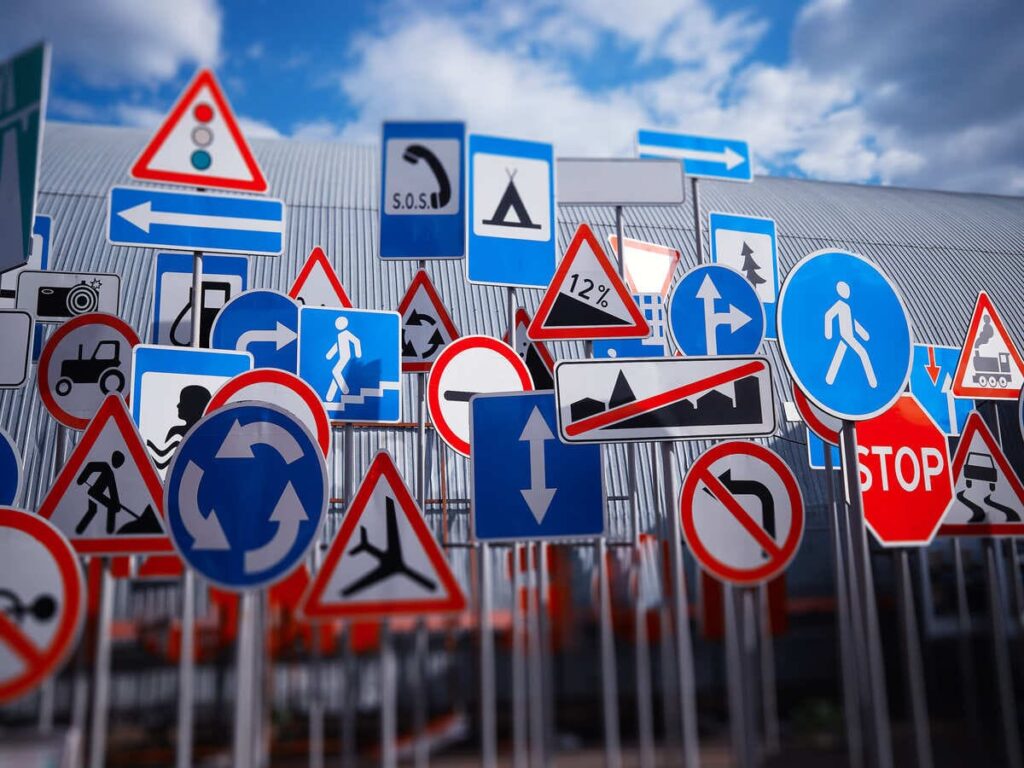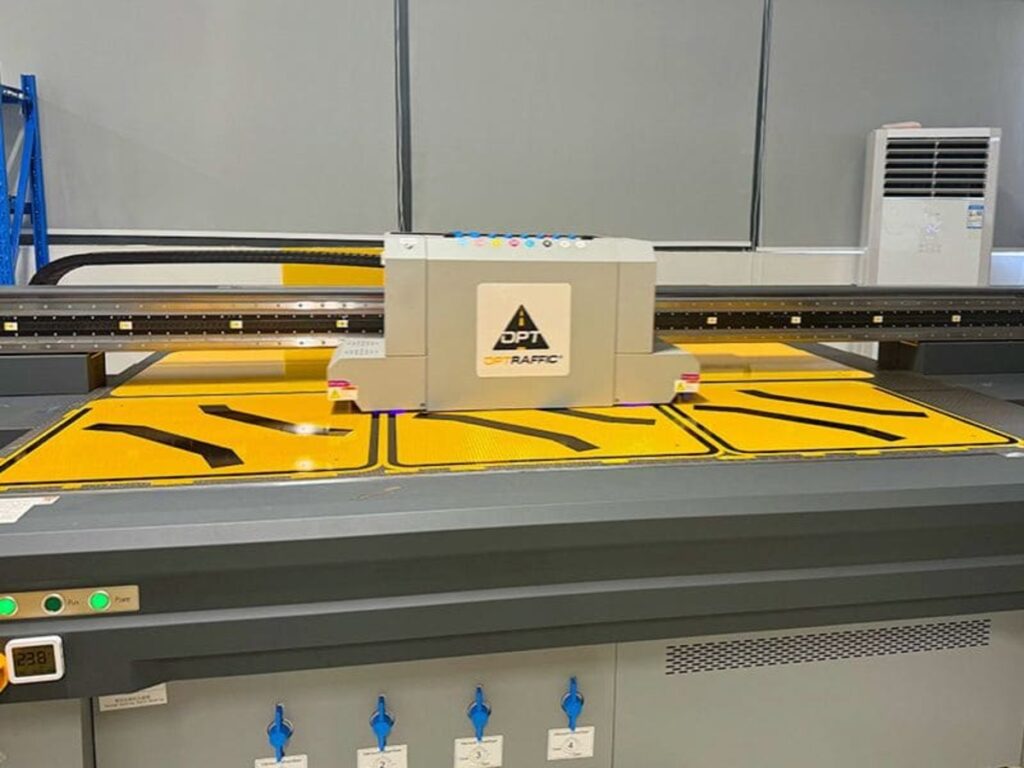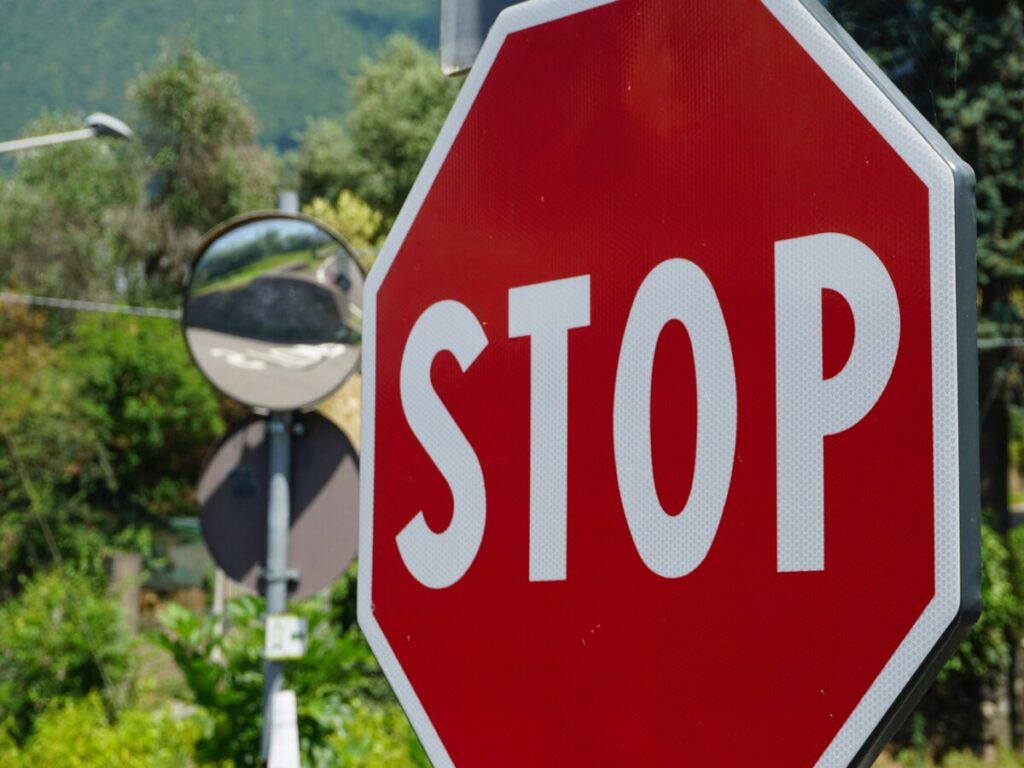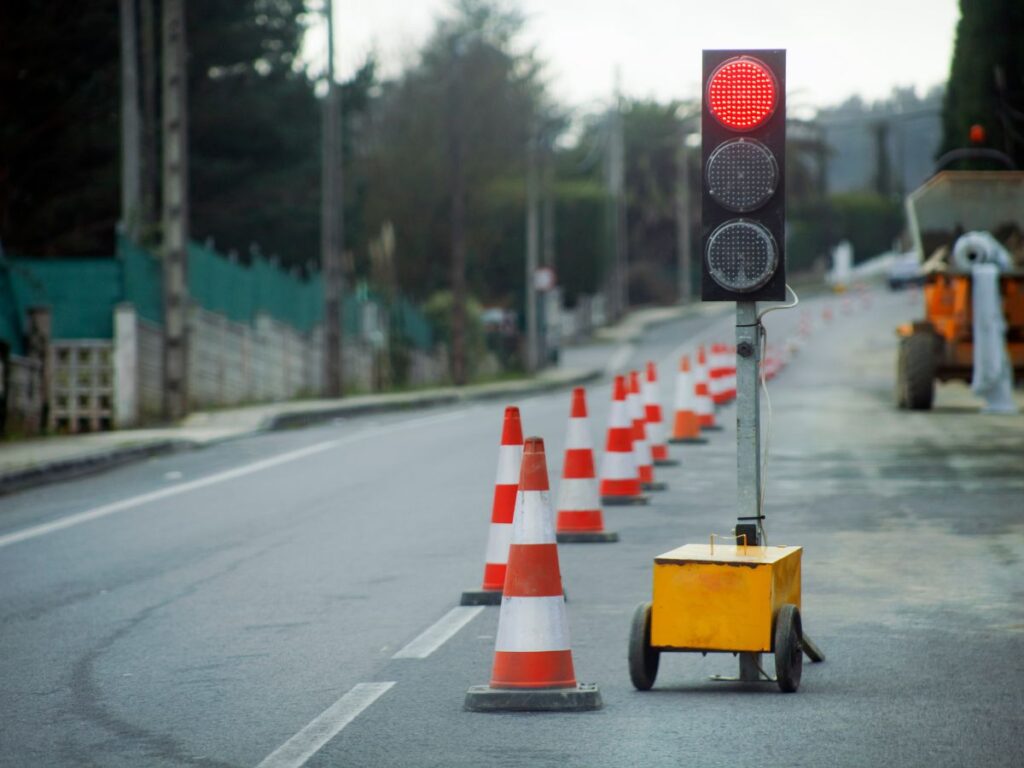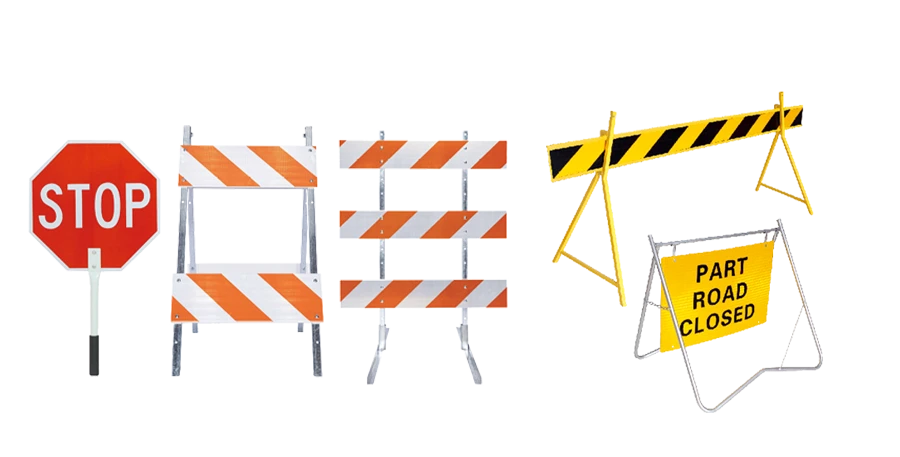
No, Generalmente es ilegal para poner el tuyo “No estacionar” firmar sin la debida autorización. Si bien puede pensar que colocar un letrero frente a su entrada evitará el estacionamiento no deseado, la legalidad de hacerlo depende de si su propiedad es pública o privada. Las señales no autorizadas pueden causar problemas con los vecinos, conducir a disputas, e incluso resultar en multas de las autoridades locales. Para evitar problemas legales, Es fundamental comprender las reglas que rodean las señales de estacionamiento y seguir los procedimientos correctos para publicar una.. Esta guía le explicará lo que necesita saber para cumplir con las regulaciones locales y evitar complicaciones legales..
Control de llave
- No está permitido colocar señales de prohibido estacionar en la vía pública.. Sólo los trabajadores de la ciudad pueden hacer eso..
- En propiedad privada, No puedes poner señales de estacionamiento.. Pero debes seguir las leyes locales..
- Consulte siempre las normas locales antes de colocar carteles.. Esto le ayudará a evitar multas y problemas legales..
- Utilice señales que cumplan con MUTCD para mensajes claros y seguridad legal. Estos carteles se aceptan en todas partes..
- Si tienes problemas de aparcamiento, pregunta en tu ciudad por señales oficiales. En su lugar, no hagas tus propios carteles..
¿Quién puede colocar señales de prohibido estacionar??

Vías públicas: solo las ciudades y el DOT pueden instalar señales de prohibido estacionar
No está permitido colocar señales de prohibido estacionar en la vía pública.. Sólo entidades autorizadas, tales como oficinas de la ciudad y del condado o la Departamento de Transporte (PUNTO), tener la autoridad legal para gestionar el estacionamiento público e instalar señales de prohibido estacionar. Estas agencias son responsables de garantizar que las señales sigan las leyes locales y estatales., manteniendo la seguridad, y gestionar el flujo de tráfico.
Por ejemplo, en Seattle, el Departamento de Transporte de Seattle (SDOT) decide donde no hay señales de estacionamiento ir, incluyendo zonas temporales sin estacionamiento (PNT). Estas zonas se establecen para restringir temporalmente el estacionamiento para actividades como la construcción., furgonetas de mudanza, o eventos especiales como desfiles. Si requiere el uso de una Zona Temporal de No Estacionamiento, la solicitud debe presentarse al menos 24 horas de antelación, y el área será designada para vehículos específicos con un Permiso de Área Restringida (RAP). Estos permisos sólo se emiten para vehículos comerciales., como furgonetas o camiones de mudanza, no para turismos.
Importante: Si tiene problemas de estacionamiento en su calle, contacta con el departamento de transporte de tu ciudad. Pueden revisar tu solicitud., determinar si se necesita una señal de no estacionar, y evaluar si se requiere una zona temporal de estacionamiento prohibido para facilitar actividades o eventos específicos. Tenga en cuenta que no se instalarán ni retirarán letreros los fines de semana ni los días festivos., así que planifique con anticipación.
En algunos casos, Es posible que deba notificar a las propiedades o establecimientos minoristas cercanos si su solicitud involucra espacios de estacionamiento pagos., para asegurarse de que estén al tanto de los cambios temporales. También es importante cumplir con las restricciones de estacionamiento en horas pico publicadas por la ciudad..
Consejo: Siempre consulte con la ciudad o el DOT para garantizar el cumplimiento de las regulaciones locales., especialmente si necesita reservar espacio público temporalmente para propósitos específicos como construcción o eventos especiales.
Aquí hay una tabla que muestra quién puede colocar carteles y qué hacen.:
| Autoridad | Descripción |
|---|---|
| Ingeniero de Tránsito Municipal | Puede colocar señales temporales de prohibido estacionar durante emergencias para detener los atascos de tráfico.. Las señales deben quitarse una vez superada la emergencia. |
| Departamento de Transporte | Puede quitar o mover señales de tráfico cuando ya no sean necesarias. |
Propiedad privada: reglas para propietarios y empresas
No puedes poner señales de estacionamiento en tu propio terreno.. Debes seguir las normas locales para seguir siendo legal. Sólo coloque letreros en su propiedad, no en aceras o calles públicas. Colocar carteles en las entradas principales para que la gente pueda verlos.. Utilice tornillos y coloque carteles en lo alto para evitar que la gente se meta con ellos..
Si posee un negocio, como un estacionamiento o propiedad comercial, puedes gestionar el estacionamiento dentro de tu lote, pero debes cumplir con las reglas de la ciudad. Las ordenanzas locales pueden dictar los tipos de señalización permitida., así como la colocación de señales para garantizar la seguridad y accesibilidad. Es importante consultar las directrices de su ciudad para garantizar el cumplimiento..
- Los letreros deben permanecer en su propiedad.
- Los propietarios o administradores deberán colocar carteles en las entradas principales..
- Poner bien los carteles ayuda a evitar robos o daños.
Por ejemplo, propietario de un negocio en California preguntado recientemente: “Soy dueño de un negocio en California. Tengo carteles en mi estacionamiento que no permiten que los no clientes se estacionen en nuestro estacionamiento.. ¿Puede aparcar allí un no cliente discapacitado??”
En California, Las normas de estacionamiento son particularmente estrictas cuando se trata de estacionamiento accesible.. Según la ley estatal, una persona discapacitada debe tener acceso a espacios de estacionamiento designados para discapacitados, independientemente de si es cliente. Si su estacionamiento incluye espacios para clientes con discapacidad, debe asegurarse de que esos espacios estén disponibles para cualquiera que los necesite, independientemente de si es cliente de su negocio.
También es importante tener en cuenta que los lugares de estacionamiento para discapacitados deben cumplir con los requisitos establecidos por la Ley de Americanos con Discapacidades (ADA). Esto incluye señalización correcta., tamaño de espacio adecuado, y posicionamiento. Si su lote no incluye señales de estacionamiento en áreas designadas para estacionamiento para discapacitados, Es posible que no sean ejecutables si entran en conflicto con los requisitos de la ADA..
Consejo: Siempre consulte con su ciudad o condado local para conocer las reglas específicas sobre el estacionamiento para discapacitados para evitar infracciones y garantizar el cumplimiento..
HOA y lotes comerciales: cuando necesita aprobación adicional para señales de prohibido estacionar
Si vive en una comunidad regida por una Asociación de Propietarios (asociación de propietarios), Necesitará su aprobación antes de poder instalar señales de prohibido estacionar.. Las asociaciones de propietarios suelen tener normas estrictas sobre señalización para preservar la estética de la comunidad y garantizar la seguridad de los residentes.. Estas regulaciones también pueden aplicarse a las señales de prohibido estacionar., ya que deben colocarse en lugares que cumplan con las reglas de la Asociación de Propietarios.
En Nueva York, Por ejemplo, Las reglas de HOA pueden limitar dónde no hay señales de estacionamiento se puede colocar, particularmente cuando puedan afectar la apariencia de la comunidad u obstruir la visibilidad. Hoas hacer cumplir estas reglas para mantener la integridad estética y la seguridad del vecindario, que incluye garantizar que no hay señales de estacionamiento no bloquee las intersecciones ni oscurezca las señales de tráfico.
Consideraciones clave para las reglas de señales de HOA con respecto a las señales de prohibido estacionar:
- Estética y Seguridad: Las asociaciones de propietarios regulan la señalización, incluido no hay señales de estacionamiento, para mantener el atractivo visual de la comunidad. Las señales no pueden bloquear la visibilidad en las intersecciones ni colocarse en áreas que interfieran con la seguridad de los peatones y los vehículos.. Esto es particularmente relevante al colocar no hay señales de estacionamiento cerca de esquinas o entradas de vehículos.
- Aplicación de contenido neutral: Las asociaciones de propietarios deben aplicar las regulaciones por igual y sin prejuicios. Por ejemplo, si desea instalar un no hay señal de estacionamiento para uso de propiedad privada, la Asociación de Propietarios no puede rechazarlo basándose en el contenido de su solicitud (P.EJ., si está relacionado con una campaña política o mensaje personal). La aplicación de estas regulaciones debe permanecer neutral en cuanto al contenido..
- Documentos rectores de la HOA: Todo no hay señal de estacionamiento Las regulaciones deben estar documentadas en los documentos que rigen la HOA., como los pactos, Condiciones, y restricciones (CC&Rs). Si la HOA hace cumplir estas reglas sin la documentación adecuada, es posible que tenga motivos para impugnarlos legalmente.
- Los propietarios aceptan las reglas al momento de la compra: Al comprar una casa en una comunidad HOA, Los propietarios aceptan cumplir con las reglas de la asociación.. Esto incluye el cumplimiento de las normas relativas a la colocación de no hay señales de estacionamiento en propiedad privada.
Consejo: Consulte siempre los documentos que rigen su HOA antes de colocar señales de prohibido estacionar para garantizar el cumplimiento de los estándares de seguridad y estética de la comunidad..
Riesgos legales de publicar señales de prohibido estacionar no autorizadas
Por qué la policía no hace cumplir las señales no oficiales
Se podría pensar que un letrero hecho en casa mantendrá alejados a los autos. Pero la policía no escucha señales que no son oficiales.. Sólo las señales reales siguen la ley.. Los oficiales buscan señales que coincidan con las reglas de la ciudad o el estado.. Si tu signo no coincide, la policía no hará nada. No puedes usar la ley para hacer que la gente obedezca tu signo.. Puede resultar molesto ver coches aparcados donde no los quieres. Sólo los carteles legales reciben ayuda de la policía..
Posibles multas, eliminación, o problemas de responsabilidad
Colocar carteles sin permiso puede causar grandes problemas. Muchas ciudades tienen reglas sobre dónde se pueden colocar señales.. Si rompes estas reglas, Podrías meterte en problemas por aparcar ilegalmente. La ciudad podría quitar su cartel sin avisarle. No recuperarás tu dinero por el cartel.. Algunos lugares imponen multas si su letrero es demasiado alto o está hecho con material incorrecto. Aquí hay una tabla que muestra algunas sanciones comunes.:
| Tipo de violación | Monto de la multa | Notas adicionales |
|---|---|---|
| Colocar carteles arriba 7 pies | $150 | Debe cumplir con materiales específicos y métodos de fijación. |
| Múltiples violaciones | Igual que los avisos individuales | Se puede emitir para múltiples letreros en el mismo código postal |
| Eliminación de señales de incumplimiento | N / A | Las autoridades pueden retirar los carteles sin compensación |
Si remolcas un auto debido a tu señal, podrías meterte en más problemas. Es posible que tengas que pagar si el dueño del auto te demanda.
Disputas entre vecinos y riesgos de remolque
Los carteles que no están permitidos pueden molestar a los vecinos. Alguien podría ignorar su señal y estacionarse de todos modos.. Si remolcas su auto, podrías empezar una pelea. Algunas personas podrían llamar a la ciudad o llevarte a los tribunales.. Podrías perder la confianza con las personas que viven cerca de ti. Utilice siempre señales legales y siga las reglas para mantenerse seguro.. Reglas claras ayudan a que todos sepan dónde pueden estacionar.
Reglas para señales de prohibido estacionar en propiedad privada
Caminos de entrada, lotes privados, y zonas comerciales
Tú puedes decidir quién aparca en tu terreno. Si quieres establecer reglas de estacionamiento., debes seguir la ley. Coloque siempre carteles que sean fáciles de ver.. Necesita el permiso del propietario antes de establecer reglas de estacionamiento.. Esto detiene la confusión y mantiene las cosas justas..
| Requisito | Descripción |
|---|---|
| Consentir | Necesita el visto bueno del propietario para aparcar en un terreno privado.. |
| Señalización | Debes tener una señal para que las reglas de estacionamiento funcionen.. |
Coloque señales de prohibido estacionar donde los conductores las noten.. Utilice materiales resistentes para que los carteles duren más. Asegúrese de que las señales permanezcan en su terreno y no bloqueen las aceras o calles..
Señales de estacionamiento accesible y de no estacionamiento que cumplen con la ADA
Existen reglas especiales para los lugares de estacionamiento accesibles.. Estas normas ayudan a las personas con discapacidad a aparcar de forma segura. Aquí hay algunas cosas importantes que saber:
- Los lugares accesibles necesitan señales con el Símbolo internacional de accesibilidad (Isa).
- La parte inferior del letrero debe ser al menos 60 pulgadas de alto.
- Las leyes estatales o locales pueden tener más reglas para el tamaño o el color de los letreros..
- Necesitas un lugar accesible para cada 25 espacios hasta 100, entonces uno por cada 50 arriba a 200, etcétera.
- La ley federal dice que se deben marcar claramente los lugares accesibles. Hay muchas señales que cumplen con la ADA que puede usar.
Si sigues estas reglas, todos pueden estacionar de forma segura y legal.
Carril de bomberos sin señales de estacionamiento y códigos de incendio locales
Los carriles contra incendios son fundamentales para garantizar el acceso de emergencia durante incendios o emergencias médicas.. Las señales de estacionamiento en los carriles contra incendios son esenciales para mantener estos carriles despejados en todo momento.. Según los códigos de incendio locales., Los propietarios y las empresas deben marcar y mantener adecuadamente los carriles contra incendios para garantizar tiempos de respuesta rápidos para los vehículos de emergencia., como camiones de bomberos, ambulancias, y otros socorristas de emergencia.
Por qué es importante mantener despejados los carriles de bomberos:
- Acceso de emergencia: Los carriles contra incendios brindan acceso esencial para los vehículos de emergencia durante situaciones críticas. Bloqueando estos carriles, aunque sea por unos minutos, puede retrasar los tiempos de respuesta, potencialmente causando daños irreparables, como emergencias médicas no tratadas o pérdida de propiedad.
- Seguridad ante todo: En emergencias, cada segundo cuenta. Un carril de bomberos despejado garantiza que los bomberos y los paramédicos puedan llegar a los necesitados lo más rápido posible.. Cualquier retraso causado por carriles bloqueados puede obstaculizar significativamente los esfuerzos para salvar vidas..
- Consecuencias legales: Es importante tener en cuenta que estacionarse en un carril de bomberos es ilegal.. Incluso si no hay una emergencia inmediata, aparcamiento, de marcha en vacío, o dejar un vehículo desatendido en un carril de bomberos puede dar lugar a multas, remolque, u otras sanciones. Tales acciones pueden obstruir los servicios de emergencia y poner vidas en riesgo..
Requisitos clave para instalar señales de prohibido estacionar en Fire Lane:
Para cumplir con los códigos de incendio locales, Aquí hay algunas pautas esenciales para recordar al marcar carriles de bomberos.:
- Pintar el carril del fuego: Los carriles de bomberos deben estar pintados de rojo con las palabras “CARRIL DE FUEGO” escritas en blanco.. Esto ayuda a garantizar que el carril sea muy visible y alerta a los conductores que está prohibido estacionar..
- Utilice señales oficiales de carriles de bomberos: Instale señales oficiales de carriles contra incendios de prohibido estacionar con un fondo blanco brillante y letras rojas. Estas señales deben ser duraderas., claramente visible, y estratégicamente ubicados para garantizar el cumplimiento.
- Colocación adecuada de señales: Se deben instalar señales de No Estacionar Carril de Bomberos en cada extremo del carril de bomberos y espaciarlas cada 100 pies en carriles más largos para garantizar que todo el carril esté claramente marcado. Esto garantiza que los conductores recuerden constantemente las restricciones de estacionamiento a lo largo de todo el carril de bomberos..
- Altura y posición de montaje: Las señales de carriles contra incendios deben instalarse al menos a siete pies por encima de la acera para que sean visibles tanto para los peatones como para los vehículos.. Las señales también deben colocarse a dos pies, seis pulgadas detrás de la acera para evitar obstrucciones y garantizar una visibilidad adecuada sin interferir con los pasillos peatonales.
- Mantenga despejadas las áreas de las bocas de incendio: Es vital mantener libre de vehículos el área alrededor de las bocas de incendio. Las regulaciones locales generalmente prohíben estacionar dentro 15 pies de una boca de incendios, y esto debe estar claramente indicado con señales de que no hay estacionamiento en el carril contra incendios para garantizar que los servicios de emergencia puedan acceder al agua durante un incendio..
Siguiendo estos requisitos de señales de no estacionamiento en el carril de bomberos, usted garantiza el cumplimiento de los códigos de incendio locales, mejorar el acceso de los vehículos de emergencia, y ayude a proteger su propiedad y comunidad. Despejar los carriles contra incendios es una parte fundamental de la planificación de emergencias, y mantener estas áreas ayuda a salvar vidas.
Estándares de cumplimiento para señales de prohibido estacionar
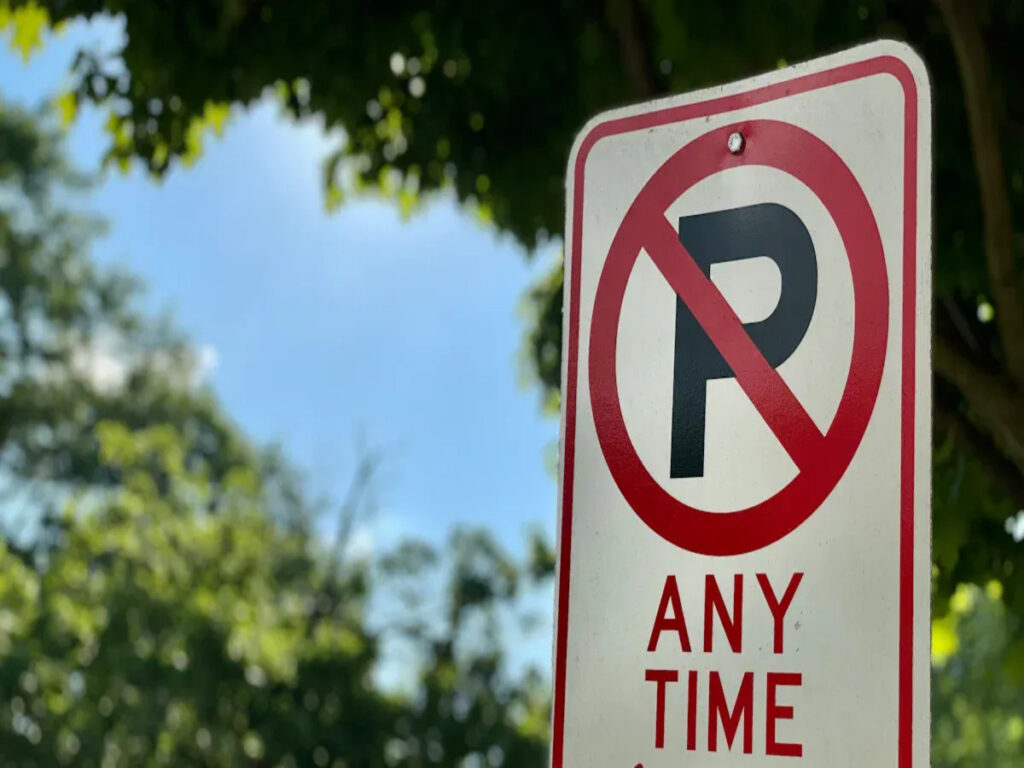
Estándares federales de señales de estacionamiento (Muescato)
Necesitas saber que el Manual en dispositivos de control de tráfico uniformes (Muescato) establece las principales reglas para las señales de prohibido estacionar en los Estados Unidos. Estas reglas ayudan a garantizar que todos los conductores vean el mismo tipo de señal, No importa a dónde viajen. El MUTCD enumera diferentes tipos de señales para diferentes situaciones.. Aquí hay una tabla con algunas señales comunes de prohibido estacionar y su significado.:
| Tipo de signo | Descripción |
|---|---|
| R7-1 | NO ESTACIONARSE EN NINGUN MOMENTO |
| R7-2 | NO ESTACIONAR 8:30 SOY A 5:30 P.M |
| R7-3 | NO ESTACIONARSE EXCEPTO DOMINGOS Y FESTIVOS |
| R7-4 | NO PERMANECER EN NINGÚN MOMENTO |
| R7-5 | APARCAMIENTO DE UNA HORA 9 A. m. a 7 p. m. |
| R7-6 | ZONA DE CARGA NO ESTACIONAMIENTO |
| R7-7 | PARADA DE AUTOBUS SIN APARCAMIENTO |
| R7-8 | APARCAMIENTO RESERVADO para personas con discapacidad |
| R8-1 | NO ESTACIONARSE EN EL PAVIMENTO |
| R8-2 | NO SE PUEDE APARCAR EXCEPTO EN LA CUNETA |
| R8-3 | NO ESTACIONAR |
| R8-3a | No estacionar |
| R8-5 | NO DETENERSE EN EL PAVIMENTO |
Estos carteles tienen colores establecidos., formas, y tamaños para garantizar la consistencia y la seguridad. Debe seguir estos estándares para cumplir con los requisitos legales sobre señales de prohibido estacionar. El cumplimiento de estas regulaciones es crucial para una gestión eficaz del tráfico y evitar problemas legales..
En OPTRAFICO, Proporcionamos de alta calidad, compatible con señales de prohibido estacionar que cumplen con todos los estándares necesarios. Nuestro Señales de seguridad del tráfico son duraderos, claro, y diseñado para ayudar a mantener la seguridad y el orden en las carreteras. Si está listo para mejorar su señalización y cumplir con los requisitos reglamentarios, Contáctenos hoy para obtener más información sobre nuestras soluciones..
Requisitos locales y estatales que debes verificar
También debe verificar las reglas locales y estatales.. Estos pueden ser diferentes de los estándares federales.. Muchos lugares requieren un mínimo tamaño de signo de 12 pulgadas 18 pulgadas, pero algunos recomiendan 18 pulgadas 24 pulgadas para una mejor visibilidad. Las leyes locales también pueden establecer reglas sobre qué tan alto debe montarse el letrero o qué tan lejos debe estar de una boca de incendio.. Algunas ciudades, Como Nueva York, requieren que la parte inferior del letrero sea al menos 7 pies sobre la acera. En California, debe colocar señales de prohibido estacionar en puestos accesibles. Aquí hay una tabla que muestra algunas diferencias.:
| Aspecto | Estándar federal | Requisito local/estatal |
|---|---|---|
| Forma de firmar | Establecido por MUTCD | Puede cambiar por ciudad o estado |
| Tamaño mínimo | 12″ x 18″ | Algunos requieren tamaños más grandes |
| Altura de montaje | 6 pies | Algunos requieren 7 pies o más |
| Reglas especiales | Pautas generales | Puede incluir la distancia de la boca de incendio, zonas de remolque |
Nota: Obtenga siempre el permiso de la autoridad local antes de instalar cualquier letrero.. Este paso le ayuda a evitar multas y garantiza que se pueda hacer cumplir su señal..
Por qué los carteles que cumplen con MUTCD evitan confusión y problemas legales
Cuando utiliza señales compatibles con MUTCD, ayudas a los conductores a comprender las reglas. Estos signos se ven iguales en todas partes, para que la gente sepa qué esperar. Esto reduce la confusión y ayuda a todos a cumplir la ley.. Si usas las señales correctas, también reduce el riesgo de disputas legales. Los tribunales y la policía confían en las señales que cumplen con los estándares. Siguiendo los requisitos, Te aseguras de que tus reglas de estacionamiento sean claras y justas..
Alternativas más seguras a las señales de prohibido estacionar hechas por usted mismo
Cómo solicitar un cartel oficial de tu ciudad
Puedes solicitar en tu ciudad una señal oficial de prohibido aparcar.. Este proceso le ayuda a cumplir la ley y evitar problemas.. Así es como lo haces:
- Complete y envíe su solicitud en línea a través del portal de su ciudad.
- Un revisor de la ciudad revisará su solicitud y se comunicará con usted si necesita más detalles o para enviarle una factura..
- Pague la factura utilizando el sistema de pago en línea de la ciudad..
- Después de que se realice su pago, el revisor le dará un permiso. Imprima este permiso y llévelo a la comisaría de policía local..
- La policía le dará señales temporales de prohibido estacionar durante el período de su permiso..
Consejo: Necesita al menos cinco días hábiles entre su solicitud y la fecha en que desea la ejecución.. Para áreas no medidas, publica tus carteles al menos 72 horas antes de la aplicación. Para espacios medidos, poner carteles al menos 24 horas por delante.
Uso de señales que cumplan con la ley para la propiedad privada
Tienes derecho a controlar quién estaciona en tu propiedad.. Para asegurarse de que sus reglas funcionen, necesitas señales claras y legales. Aquí hay algunos pasos que debes seguir.:
- Comprueba si tu propiedad es privada o pública.
- Si eres dueño de la propiedad, Puedes colocar señales de prohibido estacionar donde quieras..
- Siempre consulte las leyes y normas locales antes de colocar carteles..
- Asegúrese de que sus letreros sean fáciles de ver para todos.
- Dígales a los visitantes qué se considera estacionamiento no autorizado y qué sucederá si infringen las reglas..
- Si necesita permisos o quiere multar a los infractores, Muestra esta información en tus carteles..
Las señales claras ayudan a los visitantes a comprender sus reglas de estacionamiento. Cuando sigues estos pasos, puedes multar o multar a los infractores si es necesario.
Elegir proveedores profesionales para productos duraderos., signos reflectantes
Los proveedores profesionales ofrecen muchas ventajas sobre los carteles caseros.. Obtiene señales que cumplen con los estándares legales y duran más. La siguiente tabla muestra por qué debería elegir un proveedor profesional:
| Beneficio | Descripción |
|---|---|
| Cumplimiento de los estándares de la industria | Los letreros siguen las reglas de MUTCD, para que la gente los entienda y los obedezca. |
| Protección jurídica | Evitas multas y juicios, manteniendo su propiedad segura. |
| Durabilidad del material | Las señales duran más y permanecen visibles, Incluso por la noche o en mal tiempo. |
Las señales profesionales lo ayudan a hacer cumplir sus reglas de estacionamiento y proteger su propiedad.
Conclusión: Manténgase legal y evite errores costosos
Quieres controlar quién aparca cerca de tu casa o negocio. También quieres evitar problemas con la ley.. La mejor manera de hacerlo es seguir las reglas de señales de prohibido estacionar.. Cuando usas las señales correctas, ayudas a todos a entender dónde pueden y dónde no pueden estacionar. Tú también te proteges de las multas, argumentos, y problemas legales.
Aquí hay algunos pasos importantes que debes recordar.:
- Comprueba si tu propiedad es pública o privada. Sólo las ciudades o el Departamento de Transporte pueden colocar señales en la vía pública.
- Siga las leyes locales y estatales. Cada ciudad tiene sus propias reglas para las señales.. Algunos lugares tienen reglas estrictas de tamaño y altura..
- Utilice señales compatibles con MUTCD. Estas señales tienen el mismo aspecto en todas partes y ayudan a los conductores a conocer las reglas..
- Pide ayuda si no estás seguro. Puede ponerse en contacto con su ciudad o con un proveedor de carteles profesional para obtener asesoramiento..
- Mantenga sus señales claras y fáciles de ver. Colóquelos donde los conductores los noten..
Nota: Si utilizas carteles caseros o no oficiales, la policía no puede hacerlas cumplir. También podría enfrentar multas o que le quiten el letrero..
Puede evitar errores costosos utilizando señales legales y siguiendo los pasos correctos. Esto mantiene su propiedad segura y ayuda a que todos sigan las reglas de estacionamiento.. Si necesitas ayuda, Comuníquese con las autoridades locales o con un proveedor de letreros de confianza.. Seguir estos pasos le brindará tranquilidad y mantendrá su comunidad funcionando sin problemas..
Preguntas frecuentes: Explicación de las reglas de prohibición de señales de estacionamiento
¿Es ilegal poner tu propia señal de prohibido estacionar??
No se puede instalar legalmente una señal de prohibido estacionar en la vía pública. Las leyes estatales permiten que sólo los funcionarios de la ciudad coloquen y hagan cumplir dichos carteles.. Intentar instalar uno usted mismo puede tener consecuencias legales. Aquí hay algunas cosas clave para recordar:
- La ley estatal no permite que las personas coloquen o hagan cumplir señales de tránsito en la vía pública..
- Sólo los trabajadores de la ciudad pueden colocar señales de prohibido estacionar en terrenos públicos.
- Podrías recibir una multa o enfrentar otros castigos por colocar carteles sin permiso..
Si quieres dejar de aparcar en una vía pública, siempre habla primero con tu ciudad.
¿Puedo poner una señal de prohibido estacionar frente a mi casa??
Puedes pedirle a tu ciudad que coloque una señal de prohibido estacionar si la gente sigue estacionando ilegalmente frente a tu casa.. La ciudad examinará su solicitud y decidirá si es necesaria una señal.. Esto es lo que debes hacer:
- Habla con tus vecinos y comprueba si están de acuerdo contigo..
- Envía tu solicitud a la ciudad con tu información de contacto y detalles sobre el problema de estacionamiento..
- La ciudad podría revisar el área para ver si se necesita una señal..
- La mayor parte del tiempo, Se permite estacionar en las calles del vecindario a menos que bloquee las entradas de vehículos., buzones, o esquinas.
- No se crean zonas de estacionamiento solo cuando son necesarias por seguridad o para ayudar a los conductores a ver mejor..
No puedes colocar un cartel tú mismo en terrenos públicos..
¿La policía hace cumplir las señales de prohibición de estacionamiento en propiedad privada??
A veces, la policía puede hacer cumplir las señales de prohibido estacionar en propiedades privadas si usted sigue las reglas legales para las señales de prohibido estacionar.. Tu cartel debe decir quién puede aparcar., cuando se aplican las reglas, y que pasa si alguien estaciona sin permiso. El letrero también debe mostrar el nombre y el número de teléfono de la empresa de remolque.. Mire la siguiente tabla para obtener más detalles.:
| Requisito | Descripción |
|---|---|
| Señalización | Debe decir quién puede aparcar., horas para reglas, y remolque a costo del propietario |
| Información de remolque | Nombre y número de teléfono de la empresa de remolque necesaria. |
| Ley local | Pregúntele a la policía local las reglas exactas. |
Algunos estados, como Tennessee, permitir que la policía imponga prohibido estacionar en calles privadas si la mayoría de las personas que viven allí están de acuerdo y la ciudad dice que está bien.
¿Cuáles son las reglas para la ADA y las señales de prohibido estacionar en carriles de bomberos??
Las señales de ADA y de carril de bomberos de prohibido estacionar tienen reglas estrictas que cambian según el estado. Aquí hay algunos ejemplos:
| Estado | Requisito/Detalle | Penalización/Notas |
|---|---|---|
| California | ISA especial, la multa mínima debe estar en el letrero | Arriba a $500 para cada espacio |
| Florida | “Multa $250” debe estar en el cartel | $250 bien debe ser mostrado |
| Illinois | “$250 Bien” en rojo, Tamaño especial para espacios de furgonetas. | 12 en × 24 en cartel para furgonetas |
| Nueva York | Símbolo en movimiento, debe usar material brillante | Reglas especiales para carreteras. |
| Texas | ISA y penalización deben estar en el cartel. | Multas de la ley estatal |
| Virginia | Puede necesitar el número de ordenanza | Ayuda con las reglas de remolque. |
Debe seguir estas reglas si desea limitar el estacionamiento en lugares ADA o carriles contra incendios.
¿Cómo puedo instalar una señal oficial de prohibido estacionar??
Para obtener una señal oficial de prohibido estacionar, Haz estos pasos:
- Habla con tus vecinos y mira si te apoyan..
- Envía tu solicitud a la ciudad con detalles sobre el problema de estacionamiento..
- La ciudad considerará su solicitud y podría verificar el área..
- Si la ciudad está de acuerdo, pondrán el cartel.
Consejo: Utilice siempre la forma correcta de solicitar señales de prohibido estacionar. Esto le ayuda a evitar multas y deja las reglas claras para todos..
Necesitas saber la diferencia entre señales públicas y privadas.. Las ciudades se encargan de la señalización en la vía pública. En tu propia tierra, Puedes colocar carteles si sigues las normas locales.. Si usas señales que no están permitidas, te pueden multar o tener problemas con los vecinos. El uso de señales legales ayuda a mantener seguros los lugares de estacionamiento y hace que las cosas sean menos estresantes..
Siempre consulte las reglas locales o pregunte a los funcionarios de la ciudad antes de colocar un letrero..
- Dejar claros los planes de aparcamiento acaba con las discusiones.
- Las áreas de estacionamiento seguras y fáciles de usar ayudan a mantener a todos seguros.
- Reglamento de estacionamiento y los códigos de ciudad pueden ayudarle a conocer las reglas de su área.

